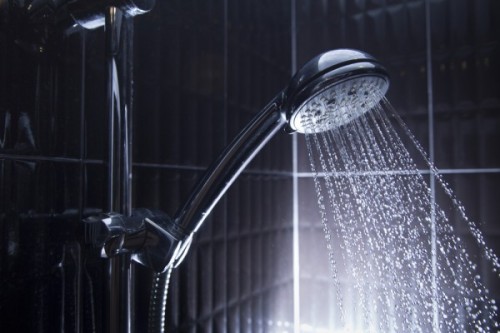
While most of us automatically recycle certain parts of our trash and turn off lights when we’re not using them – many still don’t realize that making a couple of adjustments to bathroom and kitchen fixtures could reduce the strain we place on our environment. After all, we don’t have access to an infinite source of water, and only 1% of water on earth is available for human consumption. Yet, according to the EPA, each American uses around 82 gallons of water every day!
Making a few of the following changes could help you to reduce your water waste by up to 30%.
Switch to Efficient Toilets
Your toilet is one of the appliances that uses the most water in your home – usually around 3.5 gallons per flush for inefficient models. That means that 40% of your water usage flushes away each day. If you contact your plumber, and he or she tells you that your toilet uses more than 1.6 gallons of water per flush, you should replace it with one of the following alternatives:
- A dual-flush toilet – the standard for toilets in Europe and Australia, and an increasingly common feature in U.S. bathrooms. This model features a lower flush for liquid waste and a higher flush for solid waste.
- A low-flow toilet: The 1992 energy policy act ordered all new homes and renovations to install low-flow toilet systems by 1994, but high-consumption toilets still exist.
- Starting in 2016, all toilets and urinals sold in California must meet low-flow efficiency standards set by the California Energy Commission. Toilets must not use more than 1.28 gallons of water per flush, and urinals can use now more than 0.125 gallons per flush.
Use Low-Flow Showerheads
Your shower is responsible for about 20% of your indoor water use. You can reduce water waste by around 70% by switching to a low-flow showerhead, and many new models provide the same quality stream as standard showers.
The average shower wastes about 10 gallons of water per use. While “downpour” or waterfall style showers can seem luxurious, they also waste a significant amount of water, damaging the environment and adding extra expenses onto your energy bill. While filling a large tub full of water isn’t much better, you can always begin semi-filling your bath instead to help conserve water. On the other hand, if you prefer showers, try to make sure that you limit your bathing — even with low-flow showerheads — to around ten minutes.
Install Faucet Aerators
Cost-efficient and effective, a faucet aerator is a device that contains a screen which covers the end of your faucet. As the name suggests, faucet aerators add air to the water stream that comes through your faucet by breaking the water apart. This process conserves a significant amount of water, while still giving you the flow you need for washing and other purposes.
The Environmental Protection Agency suggests that installing a faucet aerator could be one of the easiest ways to conserve water in the home – reducing waste by up to 60%! In most cases, an aerator can cut down the flow of water from your faucets by around 50% – sometimes more.
Lower the Pressure
High water pressure seems like a luxury, but it can cause a lot of problems with your plumbing system, and often has a huge impact on your water and power bills. High water pressure can mean that tiny leaks waste hundreds of gallons of water each month, and the more water you use, the more energy you use too – creating a hefty utility bill.
Switching to a low-pressure system is a great way to save money and protect your plumbing. If there’s less water used, you automatically reduce your energy bill, and lower your negative impact on the environment.
Evaluate your Water Wasting Habits
Finally, besides making updates to your plumbing, you can easily save water by re-evaluating your habits and acting with conservation in mind. For example:
- Check for Leaks: The EPA suggests that 5-10% of American homes have leaks that waste at least 90 gallons of water per day. Look for signs of water damage around your home and inspect visible pipes regularly.
- Change your appliances: Washing machines use a lot of water — particularly older models. Consider switching your old appliances for energy-efficient models designed to reduce water use. Search for the Energy Star approval label.
- Insulate your pipes: Insulating pipes will maintain heat within your system so that you don’t have to waste as much time waiting for water to warm up.
- Install a recirculation pump: This will help deliver hot water faster to faucets and showers, so less cold water goes down the drain.
Reducing water waste could be much easier than you think — all you need to do is follow a few of the tips we’ve outlined above, and you could minimize your usage in no time!

 FREE Live Music and Family Fun at Allied Gardens First Fridays The next Allied Gardens First Fridays Summer Concert in the Park is just around the corner. Grab your lawn chairs, bring a picnic, and get ready to meet your
FREE Live Music and Family Fun at Allied Gardens First Fridays The next Allied Gardens First Fridays Summer Concert in the Park is just around the corner. Grab your lawn chairs, bring a picnic, and get ready to meet your  Ideal Plumbing Heating Air Electrical Named Winner of 2023 Better Business Bureau Torch Awards for Ethics in San Diego (San Diego, CA – September 15, 2023) Better Business Bureau Serving the Pacific Southwest (BBB) has named Ideal Plumbing Heating
Ideal Plumbing Heating Air Electrical Named Winner of 2023 Better Business Bureau Torch Awards for Ethics in San Diego (San Diego, CA – September 15, 2023) Better Business Bureau Serving the Pacific Southwest (BBB) has named Ideal Plumbing Heating